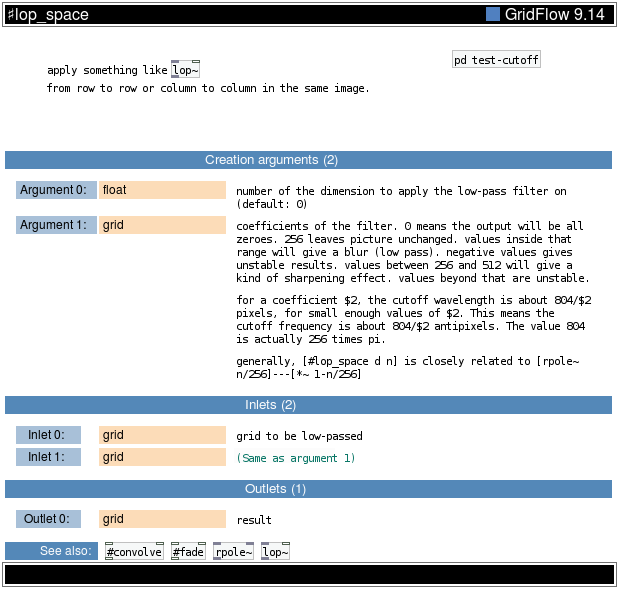
grid to be low-passed result coefficients of the filter. 0 means the output will be all zeroes. 256 leaves picture unchanged. values inside that range will give a blur (low pass). negative values gives unstable results. values between 256 and 512 will give a kind of sharpening effect. values beyond that are unstable. apply something like from row to row or column to column in the same image. rms @ 256 : 7070 = environ 10000/sqrt(2) rms @ cutoff : 3535 wavelength = 16, freq = 36000/16 = 2250 c⁰ \$2=28... -> 32 \$2=50... -> cutoff wavelength 16 \$2=90... -> 8 \$2=134... -> 4 \$2=35... -> 24 generally, [#lop_space d n] is closely related to [rpole~ n/256]---[*~ 1-n/256] number of the dimension to apply the low-pass filter on (default: 0) for a coefficient \$2, the cutoff wavelength is about 804/\$2 pixels, for small enough values of \$2. This means the cutoff frequency is about 804/\$2 antipixels. The value 804 is actually 256 times pi.